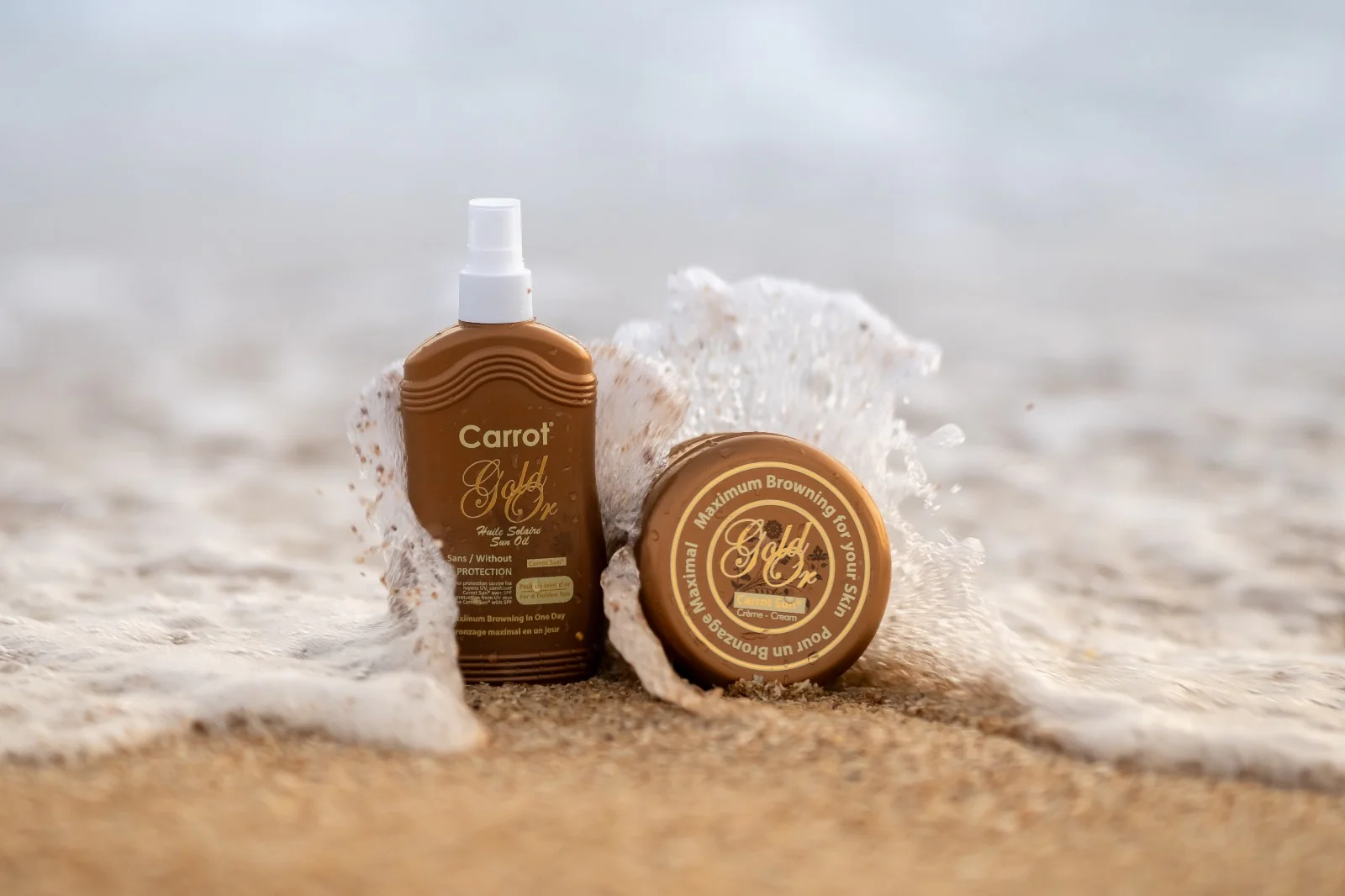Channel your inner Vogue and Confidence!

The pursuit of that perfect golden tan hasn’t changed much over the years—but how we achieve it certainly has. With new formulations that promise hydration, protection, and glow all in one, tanning oils have evolved far beyond the greasy concoctions of the past. The question is, which type actually delivers the best results? Coconut, carrot, or mineral? Each has its loyal fans and unique benefits, but knowing what’s right for your skin can make all the difference between a radiant bronze and a sunburned regret.
And if you’re on the hunt for the best tanning oil for sunbathing this year, it helps to first understand how each type works—and what your skin really needs in the sun.
You may remember when tanning oils were only used for shine. You might have used mineral oils that just made skin glossy and boosted UV exposure. Therefore, you can now see a big change in 2025. You get tanning oils made with hydrating natural ingredients, antioxidant blends, and SPF protection that give you a tan that’s safer, deeper, and lasts longer.
Modern formulations are designed with skin health in mind, often incorporating vitamins, essential fatty acids, and natural carotenoids that stimulate melanin production while preventing moisture loss. In short: they help you tan better, not faster—and that’s an important distinction.
Coconut oil has long been the beach-goer’s favourite, and for good reason. Its high-fat content locks in moisture, creating a barrier that keeps skin hydrated even under intense sunlight. Coconut oil is also packed with lauric acid, which has mild antimicrobial properties—ideal for keeping skin calm and smooth after long sun sessions.
However, coconut oil doesn’t offer much in terms of natural UV protection. So while it can enhance your tan beautifully, it’s best used alongside sunscreen or as part of a controlled tanning routine where sun exposure is limited to short intervals.
Carrot oil has become a breakout favourite in recent years, largely thanks to its high beta-carotene and vitamin A content. These compounds are natural antioxidants that encourage melanin production—the pigment responsible for your tan. The result? A deeper, warmer bronze that lasts longer and fades more evenly.
Carrot oil also supports skin repair and regeneration, helping reduce the visible effects of sun exposure like dryness and dullness. It’s particularly great for people who tan slowly or struggle with uneven colouring. Used properly, it gives the skin a radiant undertone that feels more “glow from within” than “baked in the sun.”
You may notice that mineral oils have made a surprising comeback, but this time they are completely different from the older versions. Now, you get mineral-based tanning oils that are ultra-refined, hypoallergenic, and often combined with SPF agents to protect your skin from UV damage while locking in moisture. Therefore, you’ll see that what sets them apart is their impressive stability. Mineral oils don’t tend to oxidize easily under sunlight, which means they remain effective for longer periods and don’t clog pores. You’ll find them ideal if you have sensitive skin and still want to enjoy a radiant, luminous tan without the risk of irritation or breakouts.
For those who like a glossy, even finish that enhances the skin’s natural tone, mineral oils deliver that editorial-level shine without the stickiness.
Not all tanning oils are created equal, and not all skin types respond the same way. Here’s how to match your choice to your skin’s needs:
Your choice should depend as much on how your skin reacts to the sun as on how long you plan to stay in it.
You may often hear the myth that SPF stops tanning, but that’s not true. You can still tan because SPF only prevents your skin from burning. It simply slows down UV rays from reaching your skin, helping you tan gradually and safely without causing inflammation or DNA damage. Dermatologists agree that even if you’re using tanning oil, you should always apply broad-spectrum SPF underneath or choose a tanning oil that includes built-in sun protection. A controlled tan is always more sustainable—and far healthier—than a fast one.
If you want to dig deeper into how SPF and tanning oils interact, check out resources from the Canadian Dermatology Association, which outlines safe sun exposure guidelines and product recommendations.
While natural oils like coconut and carrot sound appealing, synthetic or refined options often perform better for long-term skin health. Refined oils are more stable, resist oxidation, and tend to be hypoallergenic. Natural oils, on the other hand, provide a sensory and aromatic experience that many users prefer.
It ultimately comes down to your priorities: if you value clean, botanical ingredients, go for natural blends. If you’re looking for consistency, shelf life, and minimal irritation, then you should get refined or mineral oils. They tend to be the better fit.
Even the best tanning oil can’t save you from bad habits. Here’s what to avoid:
Small steps like these can dramatically improve the quality and longevity of your tan.
The new wave of tanning oils is focused on hybrid formulations—blends that hydrate, protect, and tan simultaneously. Expect to see more SPF-infused oils with naturally derived colour boosters like red algae or plant-based carotenoids. Brands are also becoming more transparent about UVA/UVB testing, sustainability sourcing, and cruelty-free production, which signals a major shift toward conscious tanning.
This is the era of balance: skincare and sun-care finally working hand in hand.
The ideal tan doesn’t come from chasing the sun—it comes from caring for your skin before, during, and after exposure. Whether you lean toward coconut, carrot, or mineral, the real win lies in moderation and protection.
Glow should never come at the expense of skin health. Take your time, stay hydrated, and choose your tanning oil wisely—because the best kind of tan is one that feels as good as it looks.